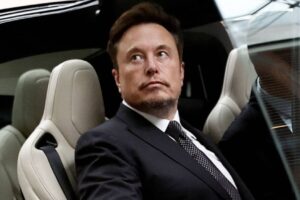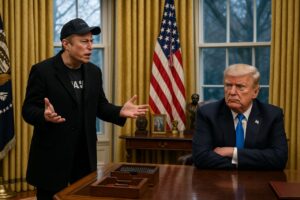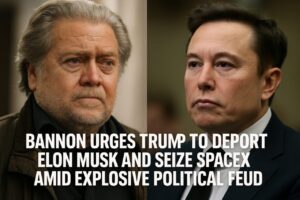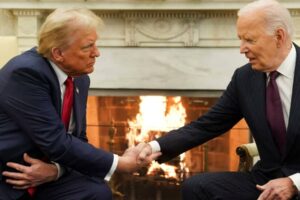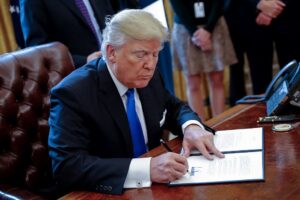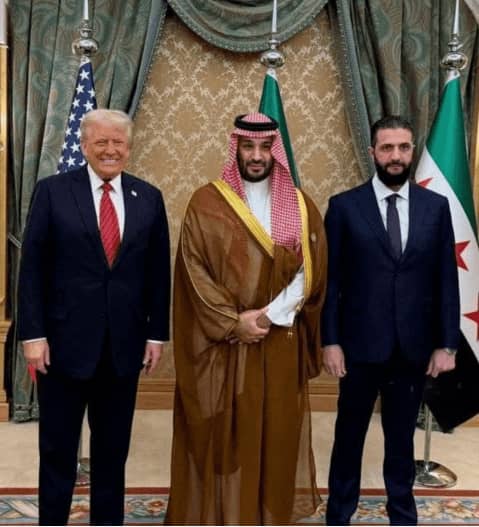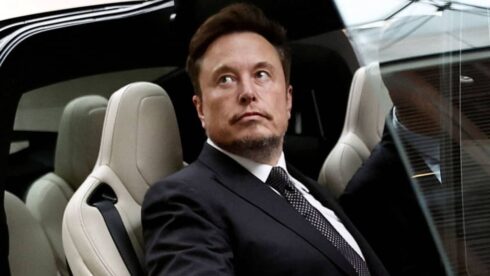In a dramatic diplomatic shift, President Donald Trump met with Syria’s interim leader, Ahmad al-Sharaa, on Wednesday in Riyadh, Saudi Arabia. The meeting marks the first time a U.S. president has met with a Syrian head of state since Bill Clinton sat down with Hafez al-Assad in the 1990s.
Al-Sharaa, a former Islamist militant and onetime leader of the al-Qaeda-linked group Hayat Tahrir al-Sham (HTS), led the offensive that toppled the Assad regime last year. Once the target of a $10 million U.S. bounty due to his terrorist affiliations, al-Sharaa now leads what he claims is a transitional, democratic Syrian government. His appearance beside President Trump is a symbolic rehabilitation and a striking reversal of fortune.
Speaking aboard Air Force One after the meeting, President Trump described al-Sharaa as a “young, attractive guy, tough guy, strong past,” and emphasized the “historic opportunity” the new Syrian government has to rebuild the war-torn nation and re-enter the international community.
Trump Administration Lifted Sanctions: A Gamble for Stability
The meeting followed Trump’s announcement on Tuesday that the United States would lift long-standing economic sanctions on Syria. These sanctions, in place for over a decade during Bashar al-Assad’s rule, were intended to punish the regime for human rights abuses and ties to Iran and extremist groups.
In his speech in Riyadh, Trump acknowledged the harshness of the sanctions but called for a new chapter. “The sanctions were brutal and crippling… but now it’s their time to shine,” Trump said. “I say good luck, Syria. Show us something very special.”
According to White House Press Secretary Karoline Leavitt, Trump laid out several expectations for al-Sharaa: to expel foreign terrorists, deport Palestinian militants, help prevent ISIS resurgence, and take responsibility for detention centers holding ISIS fighters. These conditions, Leavitt said, were part of the broader U.S. strategy to reshape the Middle East’s security landscape.
Regional Backing and Geopolitical Shifts
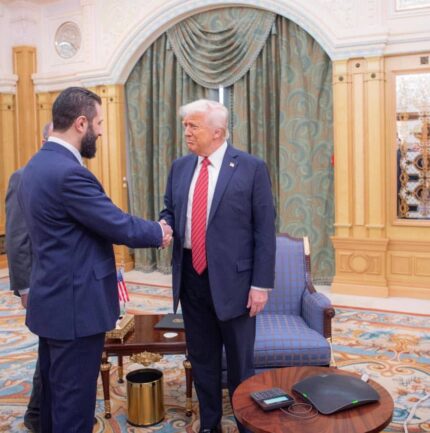
Present during the high-stakes meeting were Saudi Crown Prince Mohammed bin Salman (MBS) and Turkish President Recep Tayyip Erdogan, who joined via phone. Both regional leaders expressed strong support for the normalization of Syria’s status and the lifting of sanctions.
Erdogan praised Trump’s move as a “step toward peace,” while MBS hailed it as “courageous,” noting its potential to undermine Iranian influence in Syria. The Trump administration sees the new Syrian leadership as a potential buffer against Tehran’s regional ambitions and a key player in a broader anti-Iran coalition.
Al-Sharaa also extended an invitation for American companies to invest in Syrian oil and gas and expressed his desire for Syria to become a trade bridge between East and West. He reportedly thanked Trump, MBS, and Erdogan for their roles in organizing the meeting and welcomed the prospect of Syria joining the U.S.-backed Abraham Accords to normalize ties with Israel.
A Controversial Figure: Sharaa’s Past and Changing Image
Ahmad al-Sharaa’s emergence on the global stage has raised eyebrows in Washington and beyond. Once a combatant in the insurgency against U.S. forces in Iraq and the leader of HTS—a group with roots in al-Qaeda—his legitimacy remains contentious.
Despite his past, Syrian-American activist Mouaz Moustafa, director of the Syrian Emergency Task Force, defended the meeting and described al-Sharaa as a “changed man” now focused on peace and national rebuilding. “Let’s judge him by his actions,” Moustafa said. “He wants peace with all neighbors and is not interested in war.”
Still, concerns persist. Israel has expressed skepticism and continues airstrikes on Syrian targets it believes pose threats, especially those linked to Iran. Meanwhile, Republican Senator Lindsey Graham warned against moving too quickly. “This leadership rose through force, not the will of its people,” Graham said, urging Trump to work with Congress and U.S. allies, particularly Israel, before lifting sanctions permanently.
Strategic Calculations and What Lies Ahead
Trump’s meeting with al-Sharaa is part of a broader Middle East strategy as he begins his second term. The president’s trip—his first overseas since re-election—includes stops in Qatar and the United Arab Emirates. On Tuesday, he announced a $600 billion Saudi investment package, including what the White House called the largest defense sales agreement in history.
The U.S. is betting that a normalized Syria under new leadership can offer regional stability, help dismantle extremist networks, and curtail Iranian influence. However, the road ahead is uncertain. Secretary of State Marco Rubio is expected to meet with Syria’s foreign minister in Turkey later this week to discuss the specifics of re-engagement and diplomatic normalization.
With Syria at a crossroads and global powers recalibrating their strategies, Trump’s unprecedented decision to meet with al-Sharaa could reshape the Middle East’s future—or reignite old tensions under a new guise.


